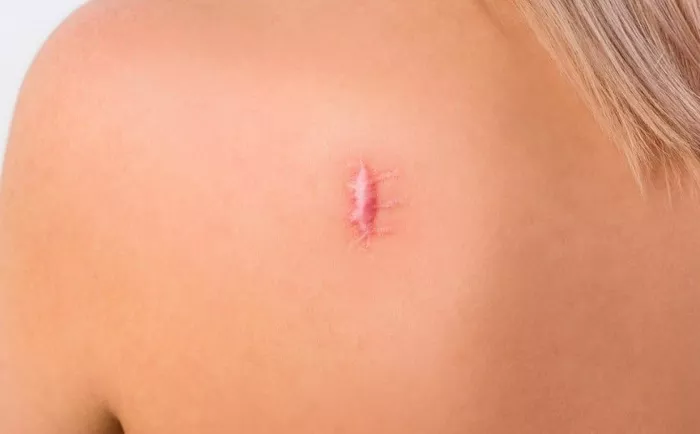Keloids are raised scars that occur where the skin has healed after an injury. They can develop after surgery, piercings, acne, or even minor injuries. For many, keloids are not just a cosmetic concern but can also cause discomfort and itching. Removing a small keloid can be a nuanced process with varying costs. This article will explore the factors influencing the cost, different removal methods, and what patients can expect financially when considering keloid removal.
Understanding Keloids
What Are Keloids?
Keloids are a type of hypertrophic scar that grows beyond the boundaries of the original wound. They are characterized by a raised, often reddish, and thickened area of skin. Unlike other scars, keloids do not regress over time and can become larger, more noticeable, and sometimes painful.
Causes of Keloids
Keloids can result from:
1. Surgical incisions
2. Acne or other skin conditions
3. Burns
4. Piercings and tattoos
5. Minor injuries like cuts and scrapes
Symptoms of Keloids
Common symptoms include:
1. Raised, thickened scar tissue
2. Red or purple coloration (may fade over time)
3. Itchiness or tenderness
4. Discomfort or pain
Factors Influencing the Cost of Keloid Removal
Size and Location of the Keloid
The size and location of a keloid significantly impact the removal cost. Smaller keloids are generally less expensive to remove than larger ones. Additionally, keloids on more sensitive or visible areas like the face or neck may require more careful and costly treatment.
Type of Treatment
Several methods can be used to remove keloids, each with its cost structure:
Corticosteroid Injections: Often the first line of treatment, these injections can help reduce inflammation and shrink the keloid.
Surgical Excision: Physically removing the keloid can be effective but often requires follow-up treatments to prevent recurrence.
Laser Therapy: Lasers can reduce the size and redness of keloids, but multiple sessions may be needed.
Cryotherapy: Freezing the keloid can be effective for smaller scars.
Radiation Therapy: Sometimes used post-surgery to prevent recurrence.
Silicone Sheets and Gels: Non-invasive but often used in conjunction with other treatments.
Geographical Location
The cost of medical procedures can vary widely depending on the geographical location. Urban areas or regions with a higher cost of living typically have higher medical costs.
Experience and Expertise of the Practitioner
The practitioner’s experience and specialization can also affect the cost. Dermatologists or plastic surgeons with extensive experience in keloid removal may charge more for their expertise.
Detailed Breakdown of Keloid Removal Costs
Corticosteroid Injections
Corticosteroid injections are a common treatment for keloids. These injections can cost between $50 to $200 per session. Multiple sessions are often required, and the total cost can accumulate based on the number of treatments needed.
Surgical Excision
Surgical removal involves excising the keloid under local anesthesia. This method can cost between $300 to $1,000 for small keloids. Additional costs may include follow-up treatments and any necessary post-surgical care to minimize the risk of recurrence.
Laser Therapy
Laser treatments use high-energy light to reduce the size and discoloration of keloids. The cost per session ranges from $100 to $500, with multiple sessions often required. The total cost depends on the number of treatments and the specific laser technology used.
Cryotherapy
Cryotherapy involves freezing the keloid tissue with liquid nitrogen. Each session can cost between $50 to $150. Multiple treatments may be needed, and the overall cost depends on the total number of sessions.
Radiation Therapy
Radiation therapy is sometimes used after surgical removal to prevent the keloid from returning. This method is more expensive, with costs ranging from $1,000 to $3,000 per treatment series. It’s less commonly used due to its higher cost and potential risks.
Silicone Sheets and Gels
These non-invasive treatments can cost between $10 to $50 per sheet or tube. While they are often used in conjunction with other treatments, they are generally a lower-cost option for ongoing keloid management.
Insurance and Keloid Removal
Coverage Considerations
Insurance coverage for keloid removal varies. If the keloid causes physical symptoms such as pain or significant discomfort, insurance is more likely to cover part of the removal cost. Cosmetic removal, however, is often not covered.
Pre-authorization Requirements
Many insurance plans require pre-authorization before proceeding with treatment. This process involves the healthcare provider submitting documentation that demonstrates the medical necessity of the procedure.
Out-of-Pocket Expenses
Patients should be prepared for potential out-of-pocket expenses. These can include co-pays, deductibles, and any portion of the treatment not covered by insurance. Consulting with the insurance provider before starting treatment can help clarify potential costs.
Consultation and Diagnosis
Initial Consultation
An initial consultation with a dermatologist or plastic surgeon is the first step. This visit typically costs between $100 to $250 and involves an assessment of the keloid, discussion of treatment options, and formulation of a treatment plan.
Diagnosis and Treatment Plan
The practitioner will evaluate the keloid’s size, location, and severity. They may recommend a combination of treatments to achieve the best results. The diagnosis and treatment plan will determine the overall cost and duration of the treatment process.
Post-Treatment Care and Costs
Follow-Up Appointments
Follow-up appointments are essential to monitor healing and manage any complications. These visits can cost between $50 to $200 each, depending on the practitioner and the location.
Additional Treatments
Depending on the initial treatment’s effectiveness, additional treatments or touch-ups may be necessary. The cost of these follow-up treatments will add to the overall expense.
Scar Management
Post-treatment care often includes scar management techniques such as silicone sheets or gels, pressure garments, and moisturizers. These products have their associated costs and are crucial for optimal healing and minimizing recurrence.
Cost-Effective Alternatives and Financing Options
Home Remedies and Over-the-Counter Treatments
For those seeking cost-effective options, home remedies such as pressure dressings, onion extract gels, or over-the-counter silicone gels may offer some relief. However, their effectiveness is generally lower compared to medical treatments.
Financing Options
Many clinics offer financing options to help manage the cost of keloid removal. Payment plans, medical credit cards, and personal loans are common options that can make treatment more affordable over time.
Conclusion
Removing a small keloid involves various factors that influence the overall cost, including the type of treatment, geographical location, and the expertise of the practitioner. Understanding these factors can help individuals make informed decisions about their treatment options. While insurance may cover some costs, especially if the keloid causes discomfort or functional issues, patients should be prepared for potential out-of-pocket expenses. By considering all available options and consulting with a qualified healthcare provider, individuals can effectively manage both the physical and financial aspects of keloid removal.
[inline_related_posts title=”You Might Be Interested In” title_align=”left” style=”list” number=”6″ align=”none” ids=”9305,9196,9120″ by=”categories” orderby=”rand” order=”DESC” hide_thumb=”no” thumb_right=”no” views=”no” date=”yes” grid_columns=”2″ post_type=”” tax=””]

































